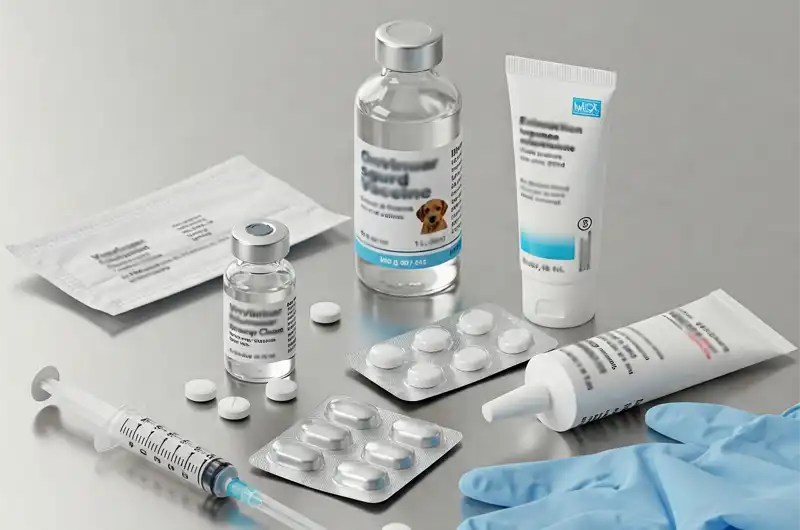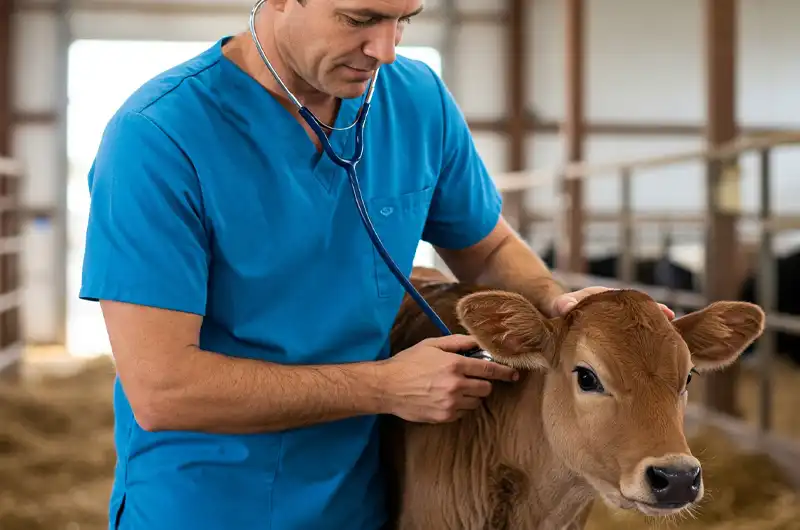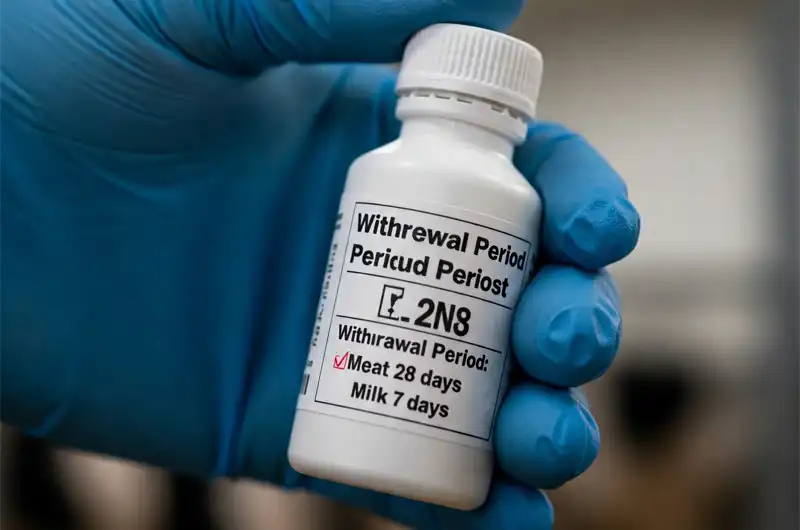Understanding animal medicines is fundamental for anyone involved in the well-being of animals, whether you’re a dedicated livestock producer, manage an agri-supply business, or are a conscientious animal caregiver. The responsible and informed use of these products is not just about treating illness; it’s about safeguarding animal welfare, ensuring the safety of our food chain, and supporting the agricultural economy. This guide will walk you through the essential aspects of veterinary medications.
What are the Core Types of Animal Medicines?
A vast array of animal health medications exists to address various needs. Knowing the primary categories helps in understanding animal medicines and their applications:
Antibiotics: Fighting Bacterial Infections
Antibiotics are powerful drugs used to treat infections caused by bacteria. They are vital for resolving issues like pneumonia, mastitis, or wound infections.
- Important Note: Due to concerns about antimicrobial resistance (AMR), the use of antibiotics, particularly those important for human medicine, is carefully regulated. Many require a veterinarian’s prescription and are no longer permitted for routine growth promotion in food animals. (Source: U.S. Food and Drug Administration – FDA)

Vaccines: The Power of Prevention in Animal Health
Vaccines are a cornerstone of preventative animal health. They work by stimulating an animal’s immune system to build protection against specific viral or bacterial diseases. Common vaccines protect against diseases like:
- Bovine Viral Diarrhea (BVD) in cattle
- Canine Parvovirus in dogs
- Equine Influenza in horses
- Porcine Circovirus in pigs
- Avian Influenza in poultry
Parasiticides: Addressing Internal and External Threats
Parasites can significantly impact animal health and productivity. Veterinary medicines in this category include:
- Anthelmintics (Dewormers): Target internal parasites such as roundworms, tapeworms, and flukes.
- Ectoparasiticides: Control external pests like fleas, ticks, lice, and mites. These come in various forms, including pour-ons, sprays, dips, and oral medications.
Anti-Inflammatory Drugs: Managing Pain and Swelling
Nonsteroidal anti-inflammatory drugs (NSAIDs) and other anti-inflammatory medications are commonly used to reduce pain, fever, and inflammation associated with conditions like arthritis, injuries, or post-surgical recovery.
Nutritional Supplements & Other Essential Medicines for Animals
This broad category includes:
- Vitamins and Minerals: To correct deficiencies or support overall health.
- Probiotics: To support gut health.
- Hormonal treatments: Used for reproductive management or specific endocrine disorders, under veterinary guidance.
- Fluid therapy: Essential for dehydrated animals.
Why Proper Use of Veterinary Medicines Matters in Agriculture and Care
The judicious use of animal medications has far-reaching implications:
Ensuring Animal Welfare Through Effective Medication
Timely and appropriate medical treatment minimizes suffering and helps animals recover from illness or injury more quickly. Preventative medicines, like vaccines, protect animals from debilitating and sometimes fatal diseases. This is a core principle of responsible animal stewardship.

Safeguarding Our Food Supply with Responsible Medicine Use
For food-producing animals, the responsible use of medicines is critical for public health. This involves:
- Preventing drug residues from entering meat, milk, or eggs.
- Controlling zoonotic diseases (those transmissible from animals to humans).
Economic Impact of Animal Health in Agricultural Operations
Healthy animals are productive animals. Effective disease prevention and treatment programs using appropriate veterinary agri medicines can:
- Reduce losses due to illness and death.
- Improve growth rates and feed efficiency.
- Enhance reproductive performance.
- Maintain market access for animal products.
Navigating Regulations for Animal Medications
The landscape of animal drug regulation is designed to ensure safety and effectiveness.
The Role of the FDA in Animal Drug Approval
In the United States, the Food and Drug Administration’s Center for Veterinary Medicine (CVM) is responsible for regulating animal drugs. Before a new animal drug can be marketed, it must go through a rigorous approval process (New Animal Drug Application – NADA) to demonstrate that it is safe and effective for its intended use in the specific animal species. (Source: FDA)
Understanding Prescription vs. Over-the-Counter (OTC) Animal Medicines
- Prescription (Rx) Animal Drugs: These can only be dispensed by or on the order of a licensed veterinarian. This is because a veterinarian’s expertise is needed to diagnose the condition, determine the appropriate drug and dosage, and monitor the animal’s response.
- Over-the-Counter (OTC) Animal Drugs: These can be purchased without a prescription because they are considered safe for use by laypersons when label directions are followed carefully.
Withdrawal Times: Protecting Consumers of Animal Products
For animal medicines used in food-producing animals, the FDA establishes a “withdrawal period.” This is the time required after the last dose of a drug is administered before the animal can be legally slaughtered or its products (milk, eggs) can be marketed for human consumption. Adhering to these withdrawal times is mandatory to prevent illegal drug residues in food. (Source: FDA)

Best Practices for Administering Animal Medicines
Responsible administration is key to understanding animal medicines and achieving desired outcomes.
Always Consult Your Veterinarian for Animal Health Issues
Your veterinarian is your most valuable partner in managing animal health. They can provide:
- Accurate diagnoses.
- Recommendations for the most effective and appropriate treatments.
- Prescriptions when necessary.
- Guidance on proper administration and biosecurity.

Correct Dosage and Administration Routes for Medications
- Read the Label Carefully: Always follow the drug label and your veterinarian’s instructions for dosage, route of administration (e.g., oral, injectable, topical), and frequency.
- Accurate Measurement: Use appropriate dosing equipment (syringes, drench guns, measuring cups) to ensure accuracy. Never guess.
- Proper Technique: If you are unsure about how to administer a medication, ask your veterinarian or an experienced animal health technician for a demonstration.
Safe Storage and Handling of Veterinary Medications
- Store medicines according to label directions, paying attention to temperature requirements (e.g., refrigeration).
- Keep medicines in their original, labeled containers.
- Store them securely, out of reach of children, pets, and unauthorized individuals.
- Protect from light and moisture if indicated.
- Note expiration dates and discard expired products appropriately.
Accurate Record-Keeping: A Must for Agri-Supplies and Farms
Maintaining detailed records is crucial, especially for food-producing animals. Your records should include:
- Identification of the animal(s) treated.
- Date of treatment.
- Name of the drug administered.
- Dosage given.
- Route of administration.
- Who administered the drug.
- The withdrawal period (if applicable). This is often a legal requirement and vital for traceability.
Responsible Disposal of Unused Animal Medicines
Never dispose of unused medicines in a way that could contaminate the environment or pose a risk to humans or other animals.
- Follow any disposal instructions on the product label.
- Ask your veterinarian or local waste management authority about take-back programs or proper disposal methods for unused pharmaceuticals and sharps (needles, syringes). (Source: FDA recommendations often guide these practices)
The Challenge of Antimicrobial Resistance (AMR) in Animal Health
Antimicrobial resistance is a significant global public health threat. It occurs when bacteria and other microbes evolve to resist the drugs designed to kill them, making infections harder to treat.
Prudent Use of Antibiotics: A Shared Responsibility for Animal and Human Health
Everyone involved in animal care has a role in combating AMR:
- Use antibiotics only when necessary and prescribed by a veterinarian to treat bacterial infections.
- Do not use antibiotics to prevent disease routinely unless part of a specific control program under veterinary guidance.
- Administer the full, prescribed course of antibiotics, even if the animal seems better.
- Focus on preventative measures: Good hygiene, biosecurity, vaccination, and proper nutrition can reduce the need for antibiotics. (Source: Centers for Disease Control and Prevention – CDC, and FDA provide extensive resources on AMR stewardship)
Finding Reliable Agri-Supplies for Animal Health Products
Reputable agri-supply businesses are important partners in animal health. They should:
- Source products from legitimate manufacturers.
- Store medicines correctly.
- Provide clear information on OTC products.
- Work closely with veterinarians and animal owners to promote responsible medicine use.
- Offer necessary supplies for proper administration and biosecurity.
Understanding animal medicines and using them responsibly is a continuous learning process. By staying informed, working with your veterinarian, and adhering to best practices, you contribute significantly to the health and welfare of animals and the safety of our agricultural system.
Latest Posts:


